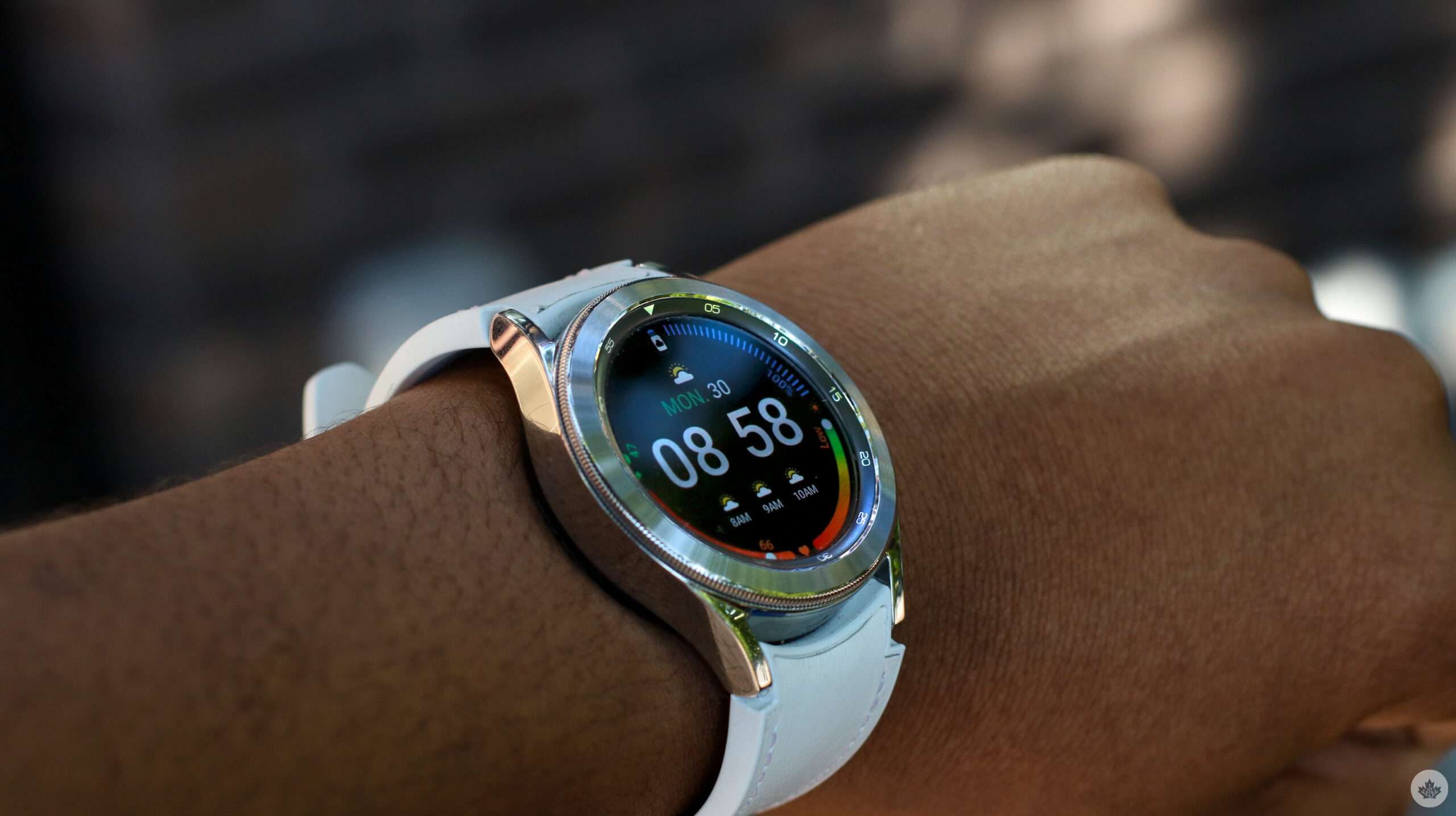
The Pros
- Improved Sleep Detection
- Wear OS
- BIA Sense
The Cons
- Less efficient battery
- Still lacks ECG and Blood Pressure monitoring
- Still has Bixby and not Google Assistant
The Galaxy Watch 4 Classic is Samsung’s successor to last year’s Galaxy Watch 3, a wearable that I called the “premium Android smartwatch.” While the South Korean company has done a lot to make its latest smartwatch different from several of its predecessors, it’s still the same in many ways.
I’ll start by mentioning that the Galaxy Watch 4 Classic does not use Samsung’s Tizen operating system (OS). Tizen is the OS Samsung has featured in its smartwatches since nearly the launch of its first wearable. The Linux-based operating system has been around for so long that it was initially strange to hear that the company planned to forgo its own software for Google’s Wear OS.
Back in May, when Google first announced the collaboration, it said that by working together, “Google and Samsung aim to merge their strengths to deliver faster performance, longer battery life, and bring more applications to Wear OS.”
With that in mind, on the user’s end, the Galaxy Watch 4 Classic feels mostly the same, with only a few notable improvements.
Still no ECG or blood pressure measurement
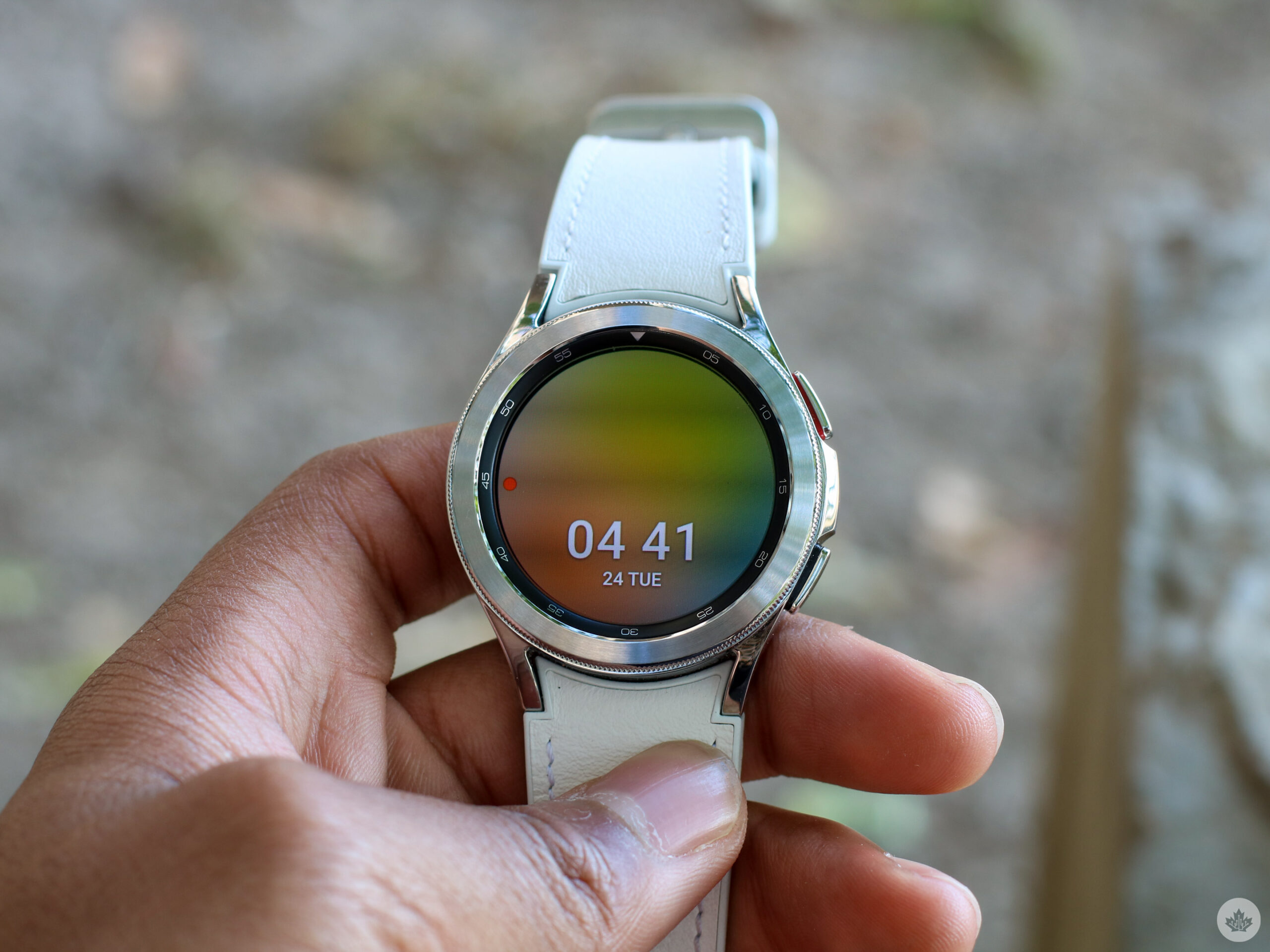
It’s worth mentioning that the Canadian version of the Galaxy Watch 4 Classic lacks ECG and blood pressure measurement. Widgets are present for both features on my review unit, but when you tap on them, the wearable suggests you download an app that’s not available in Canada.
Samsung says that this isn’t its fault, however. The company claims that it’s still waiting on approval from Health Canada and will activate those features once they receive it. With this in mind, if you’re looking for a smartwatch that works well with Android and includes ECG now, the Fitbit Sense is your best option.
Wear OS
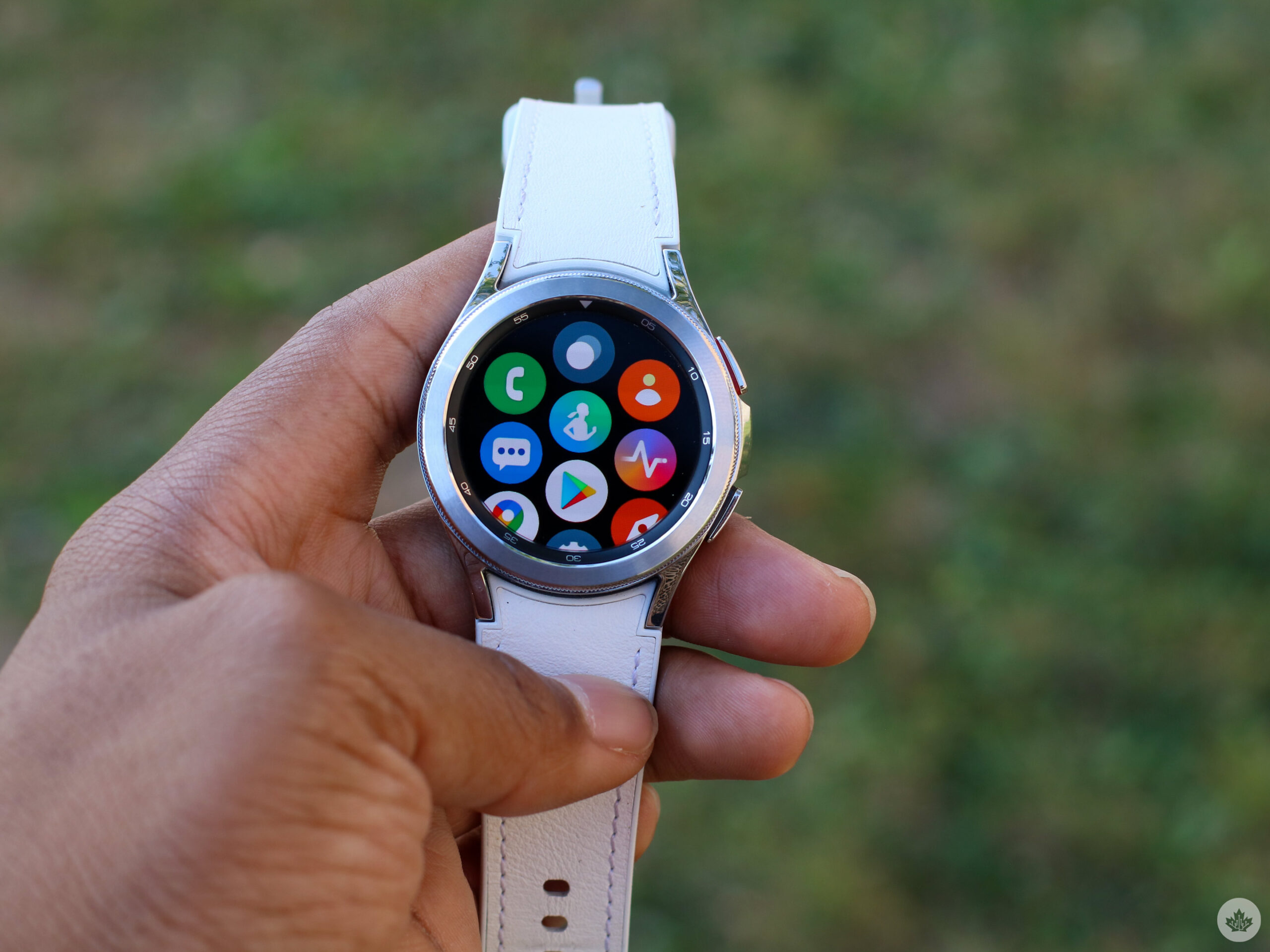
With Wear OS, the Samsung Galaxy Watch 4 Classic is able to offer far more than Samsung’s previous smartwatches. Swiping up from the home screen reveals an assortment of apps that are already pre-downloaded on the smartwatch. What’s most notable on this screen is the addition of the Google Play Store. Through the Play Store, you have access to a selection of apps well beyond what’s available in Samsung’s Galaxy Store.
While I don’t typically use many apps with my smartwatch, it was cool to see options like Shazam, Google Maps, Google Fit, Google Pay, Google Keep, Telegram, YouTube Music, several games, and tons of golf apps. I’m not the biggest fan of Samsung Pay, so having Google Pay was a welcome change.
…the smartwatch works very similarly to its predecessors despite running two different OS’.”
There are also several syncing options. For example, when using Google Maps on my phone, the app automatically connects to the smartwatch and I don’t need to keep pulling out my handset for directions. Further, when playing music with my smartphone, a media controller appears on the wearable so you can easily play and pause music.
Annoyingly, when you set your handset to ‘Do Not Disturb,’ it activates on your watch too, which caused me to miss a lot of messages as I expected the watch to still show them. Thankfully, you can turn off this syncing feature and set it so your handset can be on ‘Do Not Disturb’ but your wearable remains fully alert. It’s important to note that these syncing features only work with Samsung devices and you can’t access them if you own another, non-Samsung Android smartphone.
It’s also worth mentioning that with the introduction of WearOS, the Galaxy Watch 4 Classic doesn’t work with iOS devices like its predecessors, so it goes without saying iPhone users should just buy an Apple Watch.
One UI
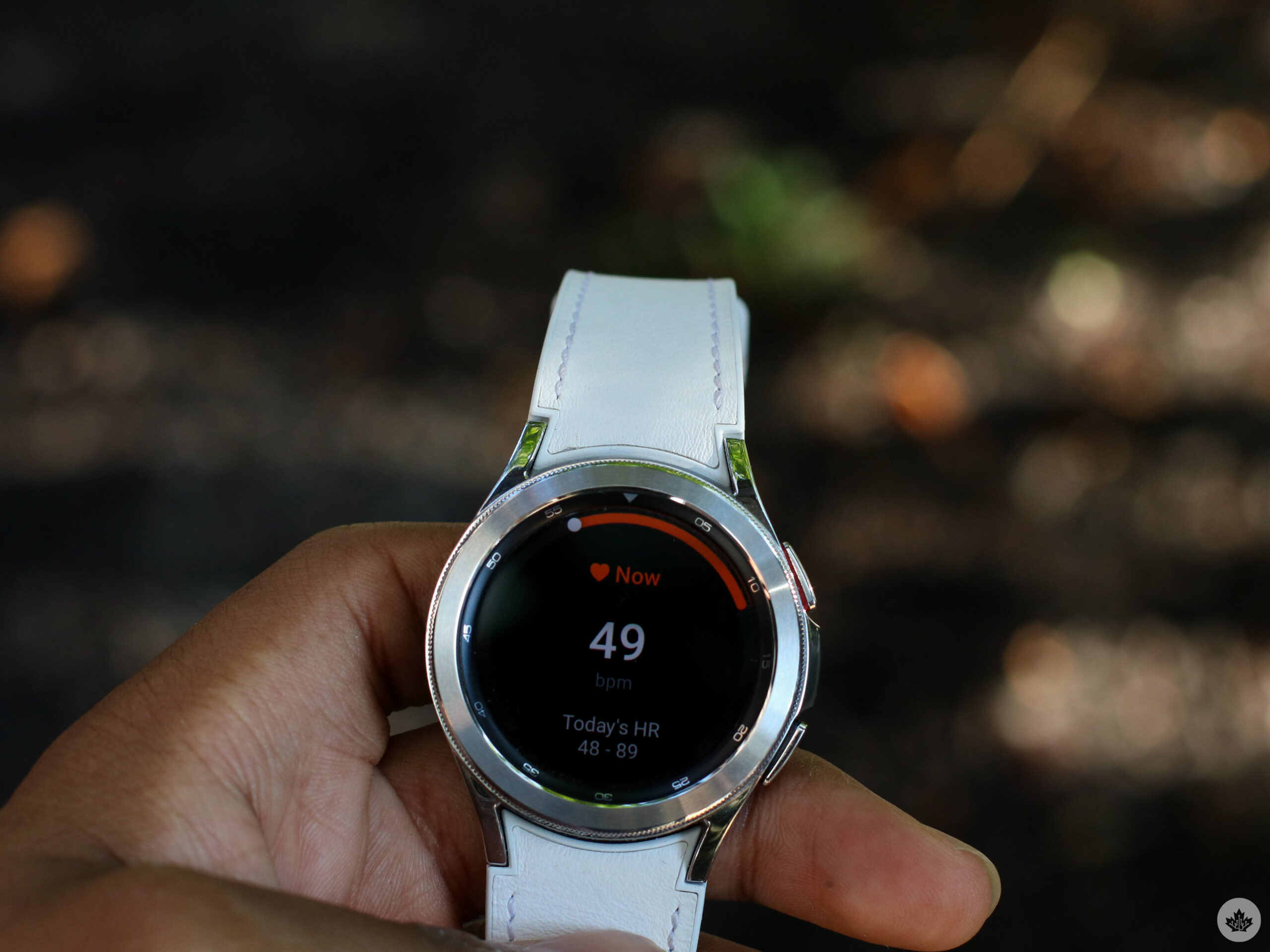
While the Galaxy Watch 4 Classic uses Wear OS, Samsung has placed One UI on top of the operating system, similar to what the company does with its smartphones.
With One UI, the device works very similarly to its predecessors despite running two different OS’. The addition of One UI helps the wearable interface look and operate the same, so users who have used past Galaxy smartwatches should feel almost right at home beyond the placement of all the apps.
To use Samsung’s widgets, you need to swipe to the right from the home screen; to read your notifications, you swipe left. To access your watch’s settings, you swipe down from the home page, which is identical to how this worked on Samsung’s previous watches. Overall, all the tiles operate similarly or more simply than they have in the past. For instance, Samsung’s Sleep widget looks mostly the same on the smartwatch, but you can also view a lot more information when you access Samsung Health on your smartphone.
What’s New
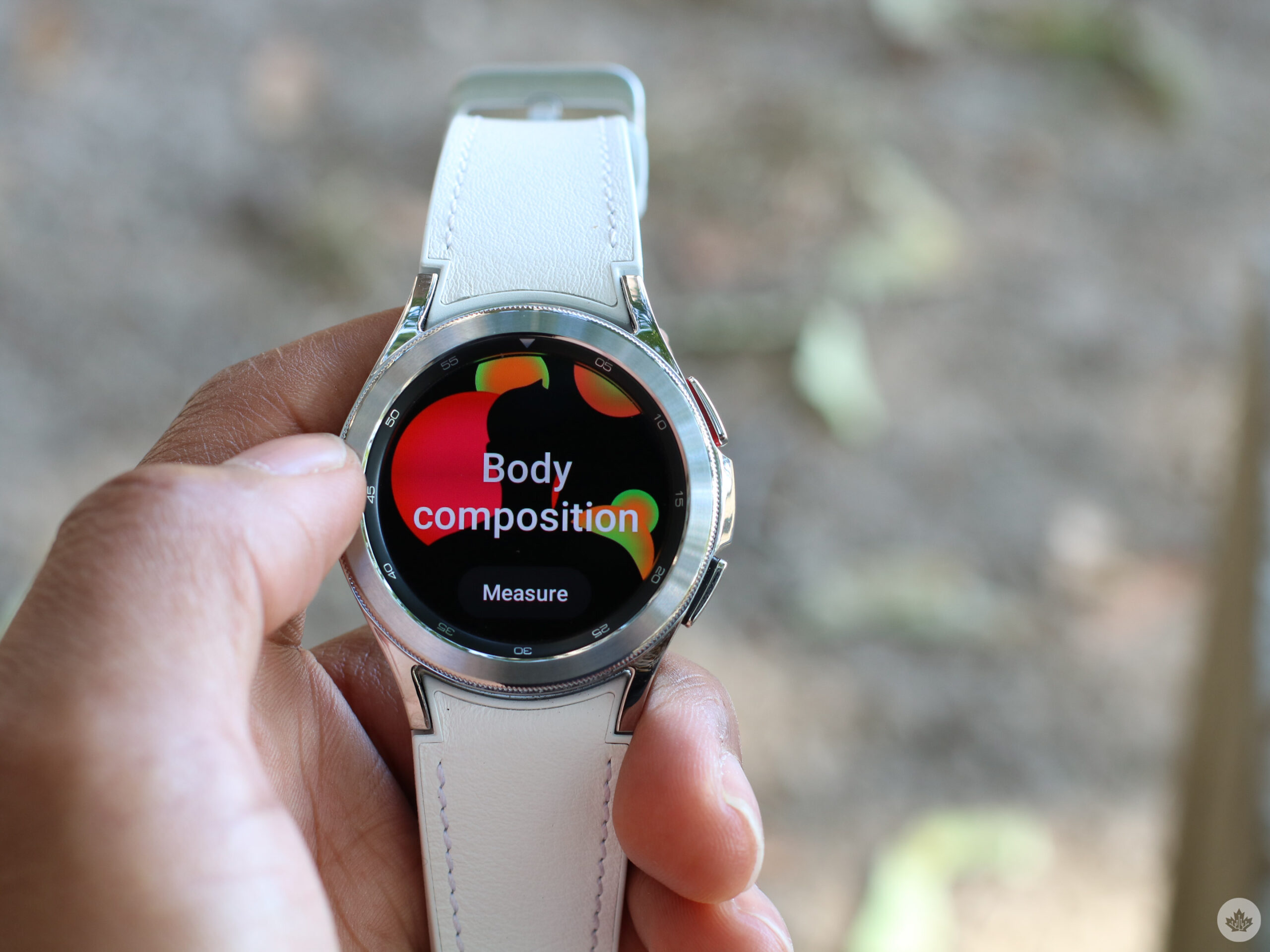
While a lot of the operating system looks the same, Samsung has added a new 3-in-1 biometric sensor that enables bioelectrical impedance analysis (BIA) and allows for body mass scans that it calls ‘Body composition.’
To use this feature, the wearable asks for information like your gender, weight and age. Then, it tells you to place your middle finger and ring finger on the two buttons on the edge of the watch. Afterwards, it asks you to stay still, make sure both hands aren’t touching one another, and lift your arm away from your body while it scans. This process takes about 10 seconds, and then it breaks down your skeletal mass, fat, water weight and BMI.
While undeniably cool, gathering all this information just from your wrist likely doesn’t produce the most accurate results. Using this feature four times in succession showed varying results depending on whether I was sitting or standing, how far my arms were away from my body, and even just the way I was standing.
In Canada, you’re also able to measure your blood oxygen level with the Watch. You can even set it to track your blood oxygen level while you sleep.
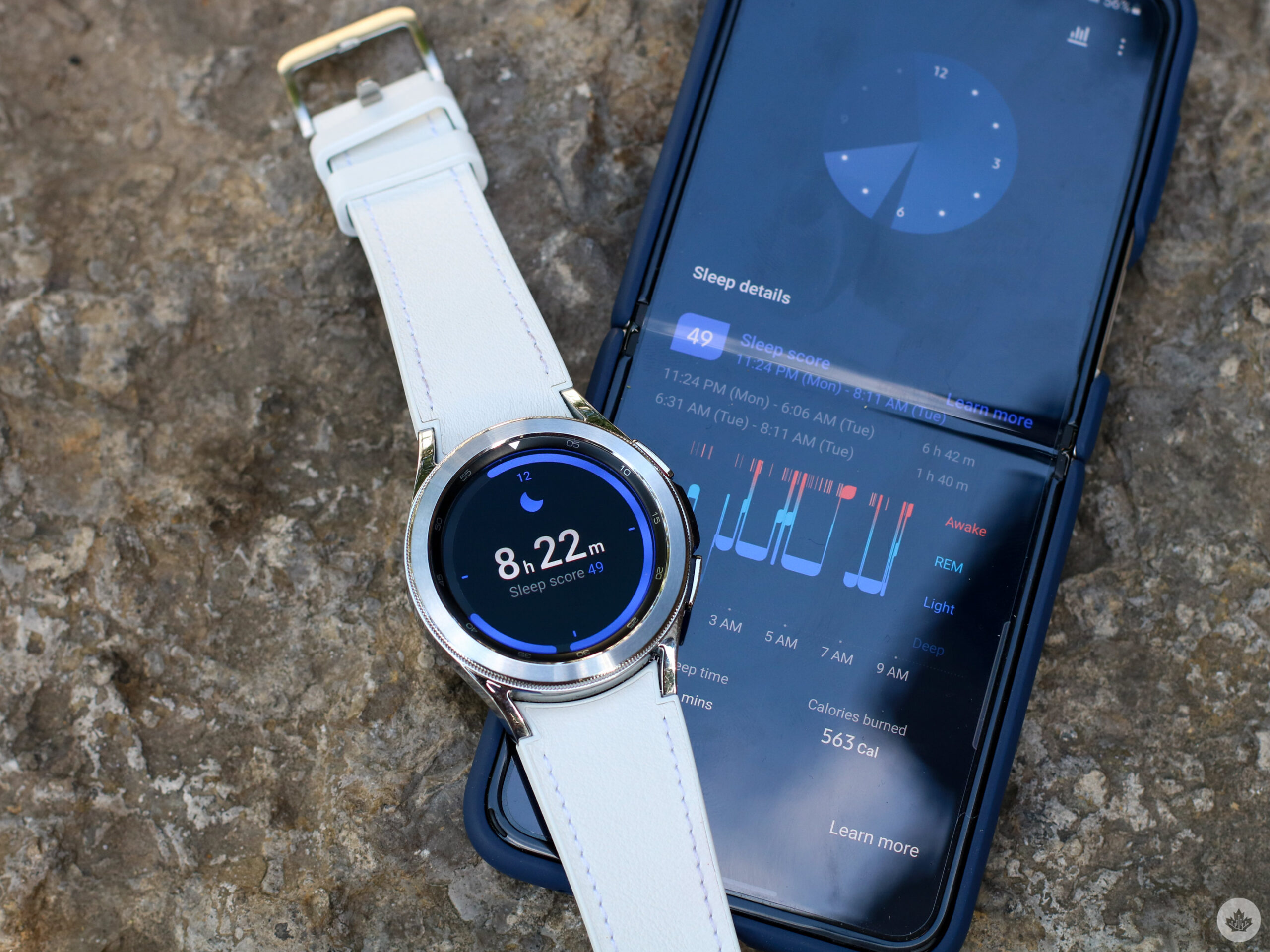
When I used this feature, the Galaxy Watch 4 Classic said that my blood oxygen level dips to about 85 percent while I’m sleeping for a total of nine minutes. This obviously isn’t something I enjoy knowing, but it also explains why my sleep rarely feels very restful.
You can also use the watch to detect if you’re snoring. Alongside the Galaxy Watch 4 Classic, you need to place your phone close to you, and together, the devices record your snoring and indicate how long you snored for. I used to be a really big snorer, so it’s pleasant to see that in my total sleep, I usually only snore for about roughly 40 minutes per night.
If you want any more information about your blood oxygen or your snoring, you can open additional details on your smartphone.
Watch the design
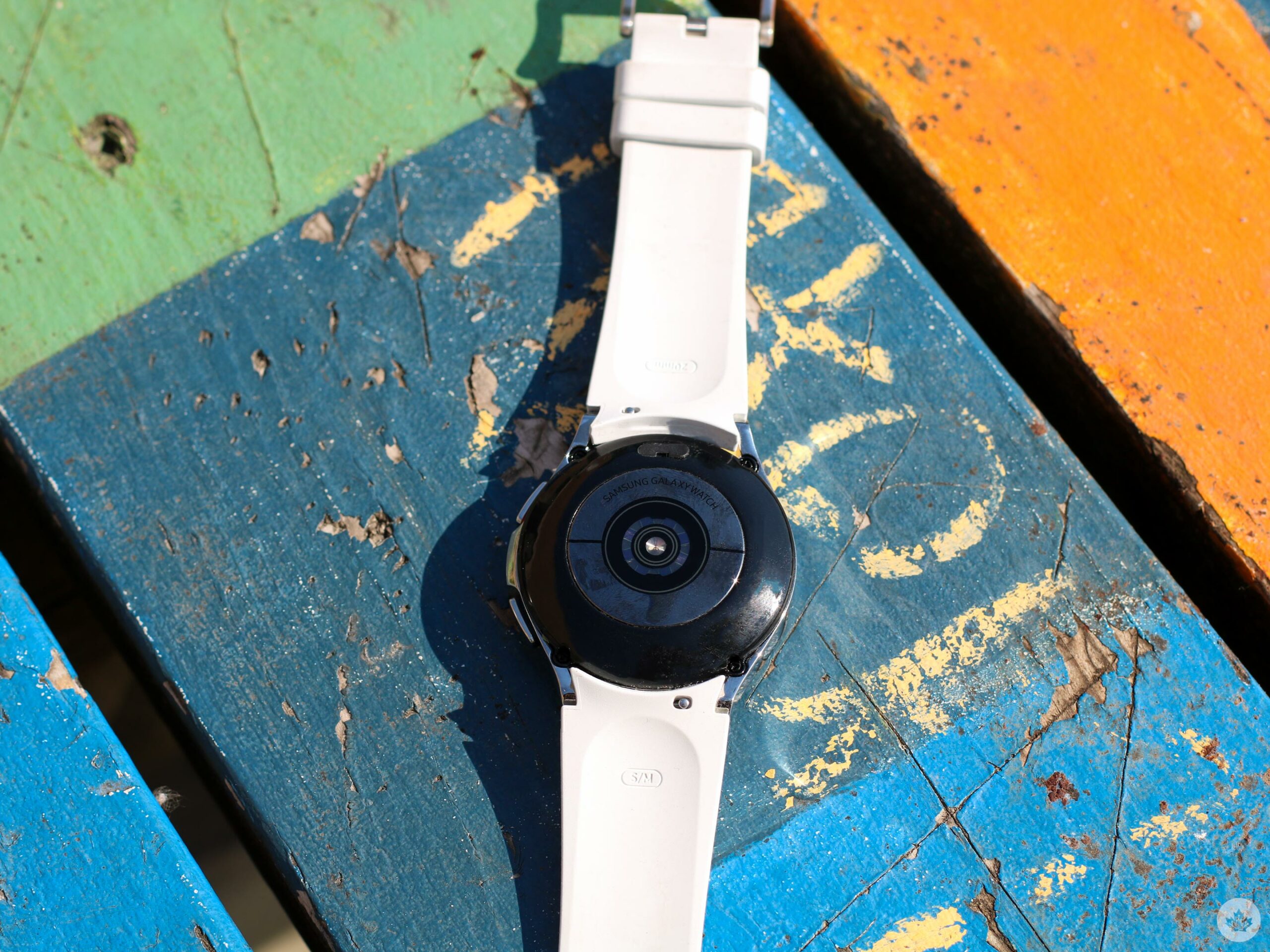
The Galaxy Watch 4 Classic’s design reminds me a lot of previous Samsung smartwatches. It features a circular display, two buttons on the side, and the ever-iconic rotating bezel.
I’m using the 42mm Watch 4 Classic, which offers a slightly smaller display than the 41mm Watch 3 that I reviewed last year. Along with a slight change in size, the Watch 4 Classic weighs in at 46.5g and the Watch 3 weighs 48.2g.
I love that it’s lighter; I often get annoyed with heavy wearables because they quickly start to feel cumbersome on my wrist.
Unlike last year’s model, the Watch 4 Classic’s rotating bezel includes that same rigid texture that was available on the original Galaxy Watch. I was happy to see this return, as it was something I missed a lot with the Galaxy Watch 3.
“It’s worth noting this time around, I’ve noticed that the Watch 4 Classic’s battery isn’t great.”
Like last year’s watch, the Watch 4 Classic’s two buttons allow users to go back to the last page and return home.
The Watch 4 Classic comes in only relatively boring ‘Black’ and ‘Silver’ models. If you want more colour options, you’ll have to get the Watch 4 (not the Classic variant), but then you’re losing the rotating bezel.
The Galaxy Watch 4 Classic’s display is fine, but it’s a smartwatch, and like with every wearable I’ve ever used, I’m not looking at pictures on it or anything like that.
Watch it move
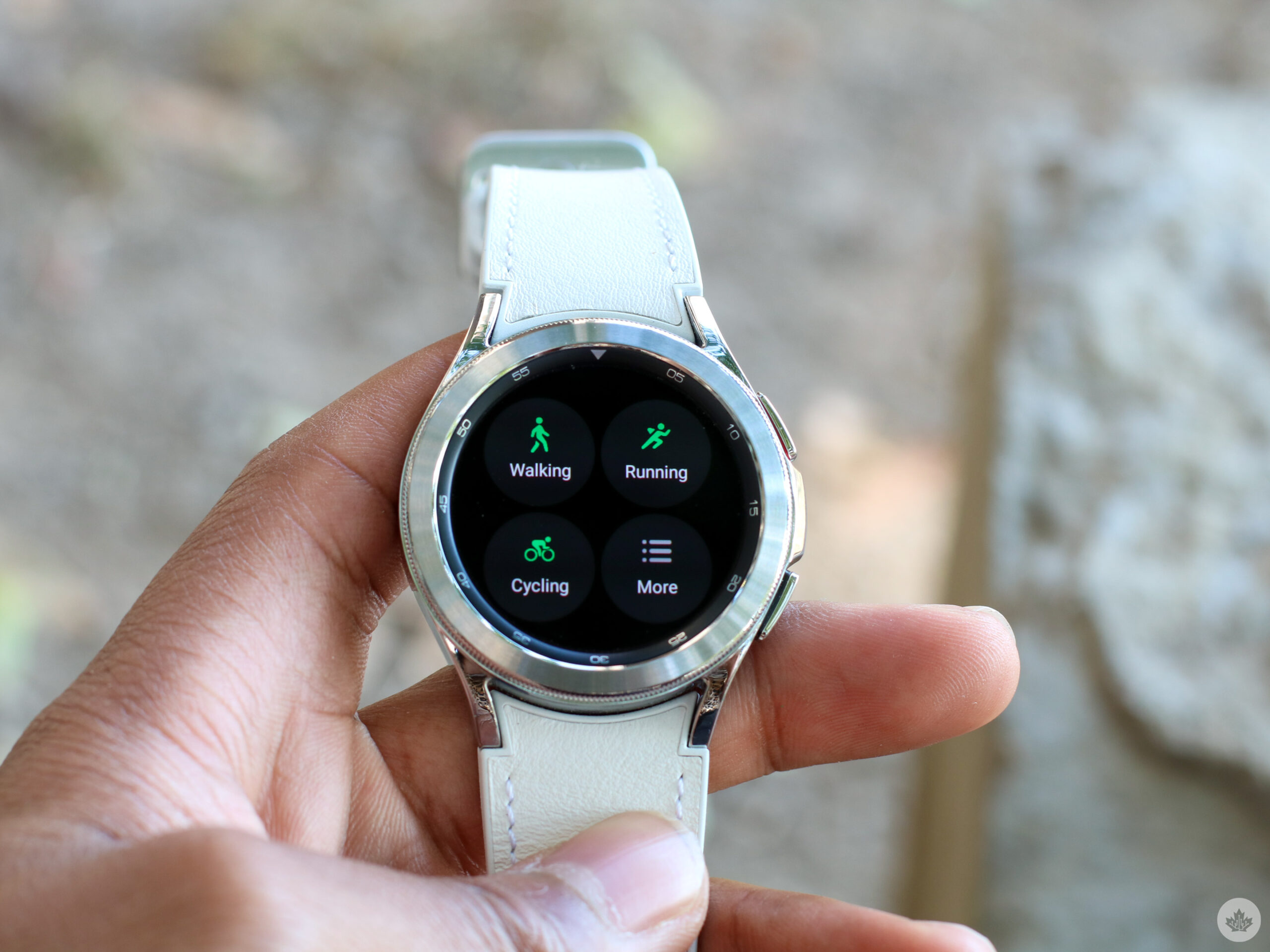
Though the Galaxy Watch 4 Classic looks and acts similar to last year’s model, under the hood it features a 5nm processor and sports 16GB of storage — double what it had last year.
The Watch 4 Classic ran pretty smoothly overall and I only encountered lag when first turning it on for the day.
I primarily enjoy using the wearable to exercise, and with its auto-detect software, the watch is able to tell whether I’m walking briskly or using an elliptical. The workout kicks in after 10 minutes of select activities, but for the most part, it’s recording the entire exercise. For instance, it took some time for the Watch to tell me that I was using an elliptical, but was only off by one minute of my total exercise time.
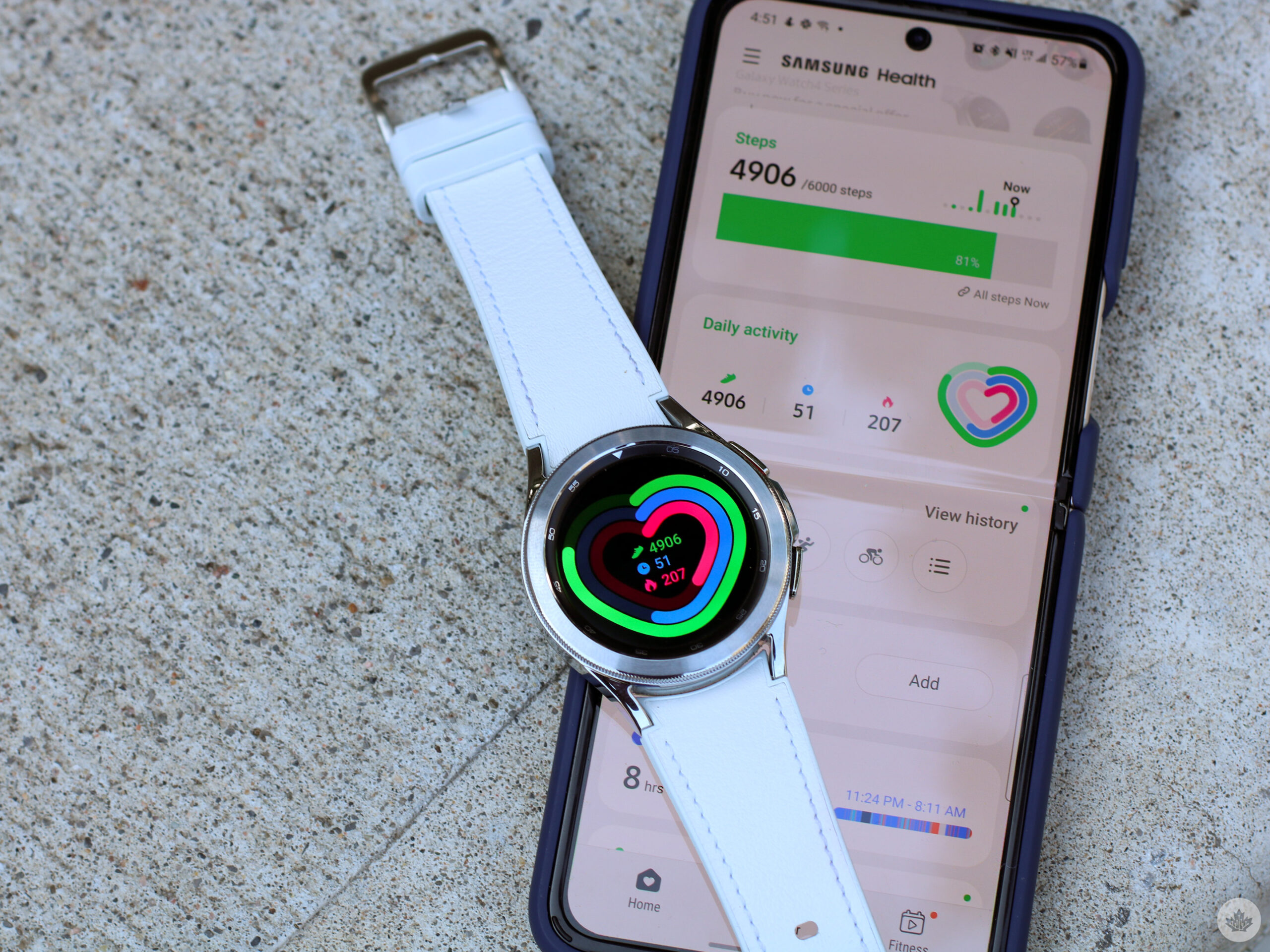
The smartwatch also automatically recognizes when you’re running, rowing, walking, and more. Additionally, you can tell the watch what other exercises you’re doing, as it’s capable of tracking 95 different workout types. This includes weight training, push-ups, crunches, jumping jacks, to name a few. When you’re doing this, the wearable will tell the user how long you’ve exercised and monitor your pulse.
It’s worth noting this time around, I’ve noticed that the Watch 4 Classic’s battery isn’t great. This is likely due to all the updates related to software and hardware, and the size of the battery only increasing slightly. With the Watch 3, I’d typically get a day and a half of battery life, but this time around with the Watch 4, it barely lasts a full 24 hours.
The watch to watch out for
The 42mm Galaxy Watch 4 Classic retails at $459, which is almost $100 cheaper than the Watch 3 when it was first released. I like that Samsung made the devices more affordable this time around. The Apple Watch Series 6, in comparison, costs $529, so if you’re an Android user, the Watch 4 Classic is the obvious choice.
However, it’s weird that the Watch 4 Classic doesn’t operate with Apple products this time around. I also like the inclusion of Wear OS and how the Galaxy Watch 4 Classic features direct access to the Play Store on the actual watch. This is definitely a step above including last year’s Galaxy Store.
That said, the battery life is pretty disappointing and unfortunately, there’s still no ECG or blood pressure monitoring on this year’s device. Overall, the Galaxy Watch 4 Classic looks great, operates smoothly, and offers a lot of customization and features.
The 42mm Galaxy Watch 4 Classic retails at $459 and is available at the Samsung Experience and other retailers in Canada.
"Overall, the Galaxy Watch 4 Classic, looks great, operates smoothly and offers a lot of customization and features."
MobileSyrup may earn a commission from purchases made via our links, which helps fund the journalism we provide free on our website. These links do not influence our editorial content. Support us here.


